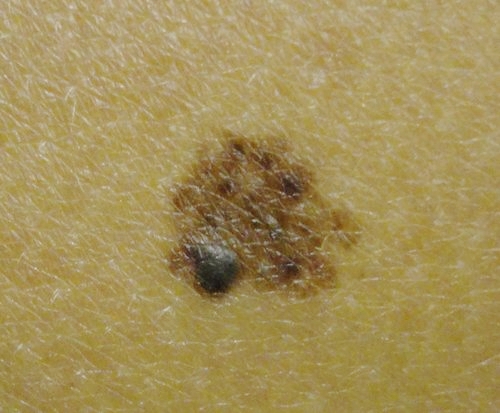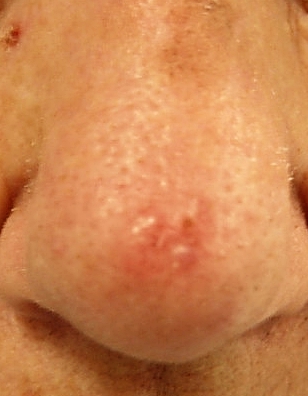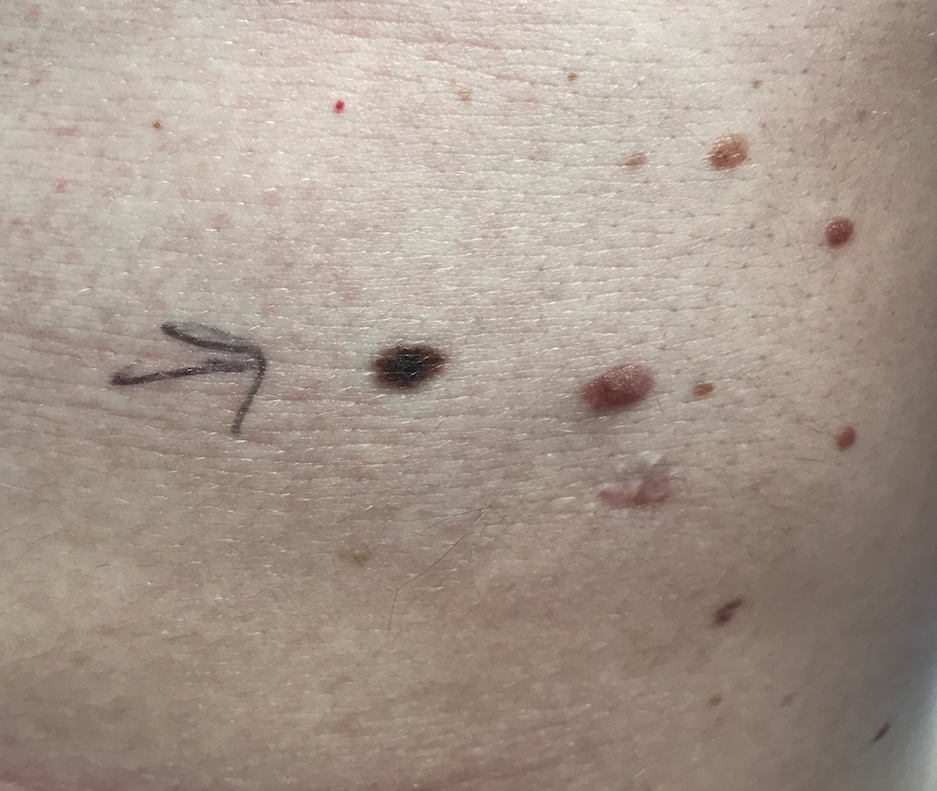Skin Cancer Diagnosis and Treatment
The Skin55 team is vastly experienced in the removal of moles and the diagnosis and treatment of skin cancer. We offer rapid access to diagnostic and treatment services, including biopsy and surgical removal of the mole or cancerous growth if needed. If you need to be seen urgently for a check of a skin growth or mole, or would like a second opinion on a skin cancer diagnosis please contact us. Call us on 0203 757 5631 if you need a same day or next day appointment.
We routinely offer:
Mole and skin cancer removal
Mohs micrographic surgery
Basal cell carcinoma treatment
Squamous cell carcinoma treatment
Melanoma treatment
Treatment of rare skin cancers: sebaceous carcinoma, DFSP, porocarcinoma, atypical fibroxanthoma etc
We have high level expertise, with many consultants at Skin55 having leadership roles in NHS Skin Cancer services. Our multidisciplinary team including dermatologists, dermatological surgeons, plastic, facial plastic, maxillofacial and reconstructive surgeons, oncologists, pathologists are available to discuss and treat complex cases. We also have dedicated skin cancer nurse specialists available as a key worker to support you through any treatment you may need.
Skin cancer
Cancerous skin changes are on the rise despite media messages regarding sun protection and increased awareness amongst the public. The most serious types can be life threatening but many are milder and less likely to cause serious harm. For this reason, it is important to protect your skin from the sun and remain vigilant for new or changing growths.
Fortunately, most types of skin cancer to do not threaten general health or decrease life expectancy, although these milder types nevertheless require treatment.
Types of skin cancer
Basal cell carcinoma
Rare skin cancers
The above represent the more common types of skin cancer, although there are other rarer forms that we have the expertise to diagnose and treat.
Whether you are simply worried that you may have a skin cancer, or have been formally diagnosed, we are able to provide comprehensive treatment or a second opinion.
Pre-cancerous changes
There are a number of skin changes that can be an "early warning" that develop before an actual skin cancer forms. Common examples are:
Lentigo Maligna
Actinic Keratosis
These can be treated in a variety of ways - both surgical and non-surgical. Non-surgical treatments include creams such as imiquimod and 5-fluorouracil, cryotherapy with liquid nitrogen and photodynamic therapy. Surgery can also be useful is some cases - your dermatologist will advise you which is suitable for you.
Mole check
A “mole check” is one of the most common reasons to visit a dermatologist. Dermatologists have particular expertise in examining and diagnosing moles, skin cancer and other skin growths.
What can I expect?
At your visit, the dermatologist you see will conduct an assessment of your risk of developing abnormal moles or skin cancer. Following this a full skin examination is performed. For this, you will be required to undress to your undergarments, and a nurse chaperone is available to assist. If you are concerned about any growths or moles in the genital or pubic area, please let the doctor or nurse know.
Do you undertake dermoscopy?
Where required, moles are assessed a specialised hand-held light known as a dermatoscope. The is a rapid, painless method of analysing moles with polarised light and magnification that allows the dermatologist to see deeper into the skin. If required, a digital dermatoscopic record of your mole can be recorded for future reference.
What is mole mapping?
If you have multiple moles, unusual looking moles or a history of skin cancer, we may recommend mole mapping. This is a specialised form of digital photogrophy, performed by an qualified medical photographer in studio conditions.
Full body shots will be taken, with a nurse present if required, and close up dermatoscopic images of selected moles.
A CD or memory stick of your photographs, with password protection, is provided to your dermatologist for future comparison. A copy is also available to the patient if required.
One stop mole clinic
At you visit you will be seen and examined by consultant dermatologist (not a nurse unlike other commercial clinics). You can expect:
A full skin examination
Instant answers about your mole
Immediate surgery or booking of surgery at your convenience, unlike commercial clinics
Lab results typically within 48 - 72 hours of mole removal
No need to send images of your moles elsewhere, unlike commercial clinics
No need to return to your GP for referral letters, unlike commercial clinics
Our systems and nursing support are set up for immediate removal of skin cancer, should you need it. There is no delay and usually no need to come back another time for mole removal.
our experts can identify the high risk moles
Skin Cancer Treatment
There is no “one-size-fits-all” approach to skin cancer treatment. The treatment that best suits you is a balance of what is most effective to treat the cancer, with what is going to give the best cosmetic result, have the least impact on your lifestyle and cause the least discomfort.
It is important to discuss your case with your dermatologist, as many factors influence which treatment is the best for you. These factors include your age and general health, the type and severity of the skin cancer, the body site affected and the potential need for future treatment.
Skin cancer can be treated “medically” i.e. with creams or light, or “surgically” i.e. by cutting or laser. A list of medical and surgical treatments are given below:
Medical Treatment
5-fluorouracil cream (Efudix®)
Imiquimod cream (Aldara ®)
Ingenol mebutate cream (Picato®)
Photodynamic therapy (Metvix ® PDT)
Surgical Treatment
Liquid nitrogen cryotherapy
Liquid nitrogen is applied to the skin, using cotton bud applicator or with a spray gun. This is an excellent treatment for mild skin cancer or pre-cancerous skin changes. The skin feels very cold for a few seconds, then becomes red and swollen. Typically, the skin growth falls off within two weeks, leaving new skin in it's place.
Curettage and electrodessication
This is also an ideal "minimally invasive" surgical method for small skin cancers and precancerous skin changes. A small amount of local anaesthetic is injected into the skin which becomes numb. Then, the skin growth is gently scraped off, after which the area is cauterised. The growth that has been removed is sent for laboratory analysis.
Laser ablation (selected cases only)
Excisional surgery
This is the mainstay of treatment for skin cancer. This method allows the skin cancer to be cut out and the resulting wound is usually closed with stitches. Great care is taken to provide patients with an excellent scar and minimal inconvenience from the procedure.
Mohs' Micrographic Surgery
This is a highly specialised form of surgery which is used for skin cancers on the face, and occasionally other body sites. It offers a high rate of cure and minimizes the amount of skin which needs to be removed, altghough it is not used to treat melanoma.





